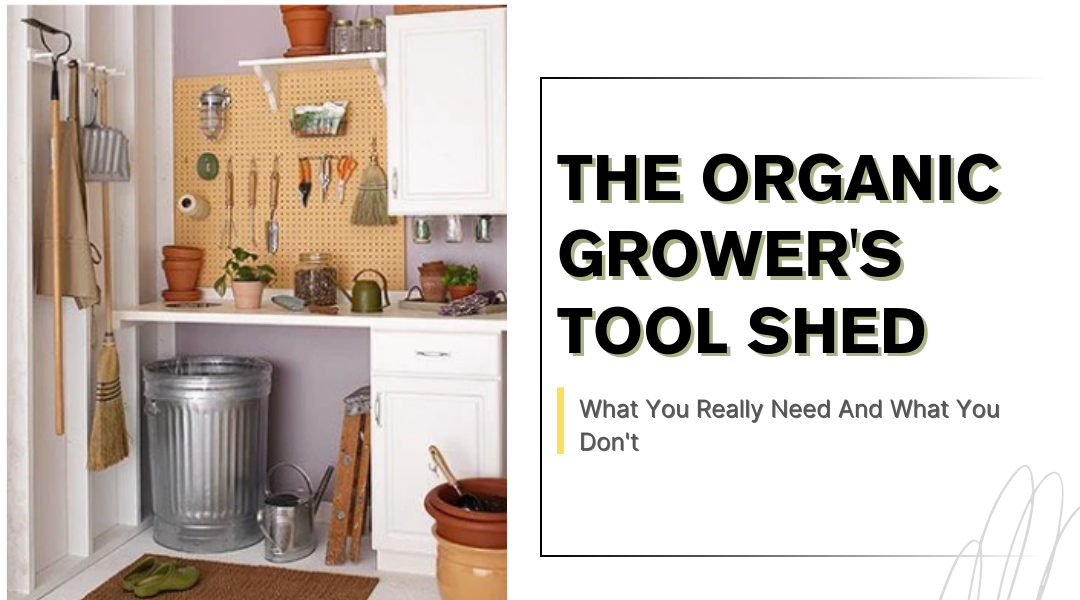You don’t need a warehouse full of fancy gadgets to grow great organic food. But the right tools? They’ll save your back, your time, and your sanity. Here’s the real-world guide to equipping your organic farm or garden without breaking the bank or betraying your principles.
The Bare Essentials (Start Here)
- The Hero Hoe
- Not your grandma’s flimsy hoe. Get a sturdy stirrup hoe (scuffle hoe) for slicing weeds at the root without bending. Pro tip: Keep it sharp—a dull hoe is just a dirt-pusher.
- Digging Fork Over Shovel
- Especially if you’ve got clay soil. Those tines break up compaction without smearing soil layers like a shovel does. Also perfect for harvesting potatoes without slicing them.
- The Indestructible Trowel
- Skip the cheap big-box store versions. Invest in a forged stainless steel trowel—it’ll outlast you. Bonus: Doubles as a weapon against rogue squash vines.
- Japanese Knife (Hori-Hori)
- Part knife, part trowel, all magic. Digs planting holes, divides perennials, harvests root crops, and even measures planting depth (many have inch markings).
- Watering Can with a Brain
- Look for one with a removable rose (that showerhead-like attachment). Brass nozzles last longer than plastic. The long spout? Lets you water exactly where needed, not on the leaves where diseases start.
“But what about a wheelbarrow?” If you’re moving more than 10 bags of compost a year, yes. Otherwise, a 5-gallon bucket with rope handles works surprisingly well.
Tool Care That Actually Matters
- The 5-Minute Cleanup Rule
Hose off dirt after use (mud left on metal = instant rust). A quick wipe with an oily rag (vegetable oil works) keeps blades smooth. - Sharpening = Sacred Ritual
A $10 file and 5 minutes monthly keeps tools working like new. Dull tools cause more injuries than sharp ones (you won’t believe how easily a sharp hoe glides through weeds). - Winter Storage Hack
Bury tools in a bucket of sand mixed with motor oil. The sand scrubs off rust, the oil prevents it. Come spring—tools slide out ready to work.
When to Upgrade (And What’s Worth It)
For Small Farms (1/4 acre+):
- Broadfork – Like a giant fork that lets you aerate soil without flipping it (keeps microbial layers intact).
- Seed Roller – Stomps seeds into perfect soil contact. DIY version: Nail boards to an old paint roller.
- Flame Weeder – Not as scary as it sounds. A quick pass with a propane torch kills weed seedlings without chemicals.
Tech That Earns Its Keep:
- Soil Moisture Meter – $15 gadget that stops overwatering guesswork.
- Solar-Pared Pruners – Cordless electric pruners charged by sunlight? Yes, for when your hands get tired.
What to Skip (Unless You’re Commercial):
- Fancy compost tumblers (a well-built pile works better)
- Expensive seed starting kits (repurposed yogurt containers work fine)
- Tractor attachments for under 2 acres (your back will recover)
The Organic Mindset
The best tool you’ve got? Observation. Walk your rows daily with your hands—feel the soil, spot the first aphid before it’s an infestation, notice which tools you actually reach for.
Remember: In organic growing, tools should solve problems, not create more (like debt or dependence). Start simple, add only what truly helps, and let your experience—not some catalog—guide your choices.
